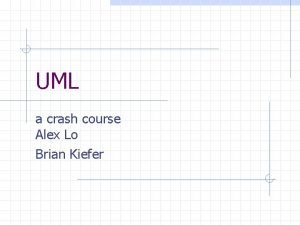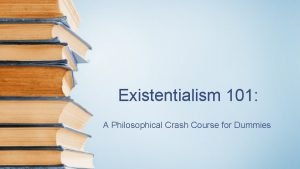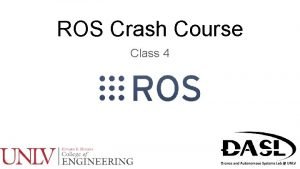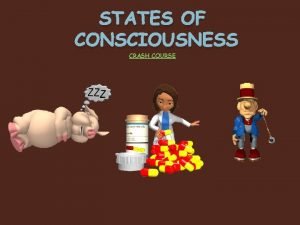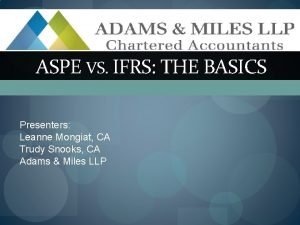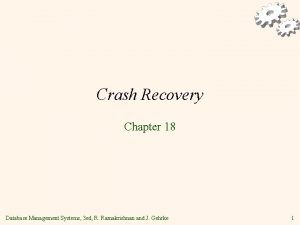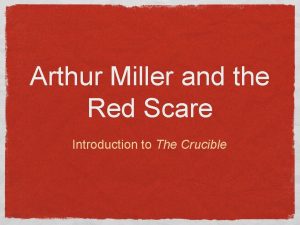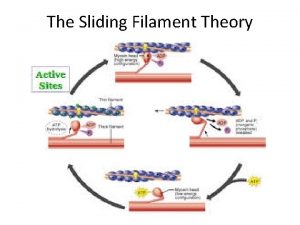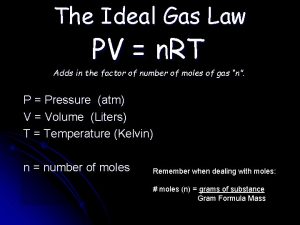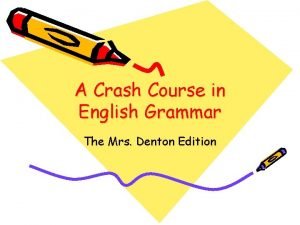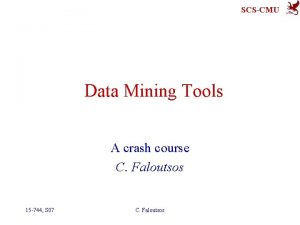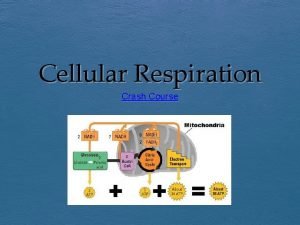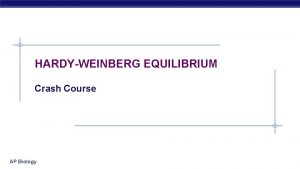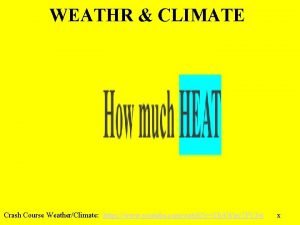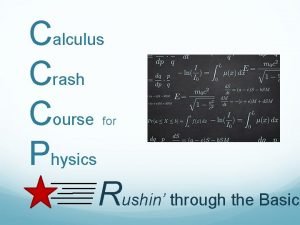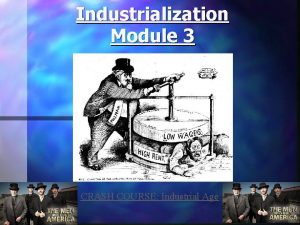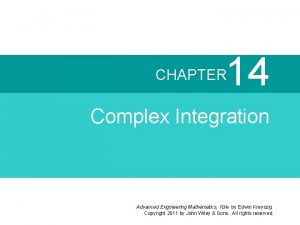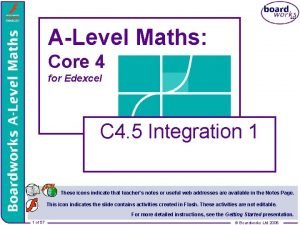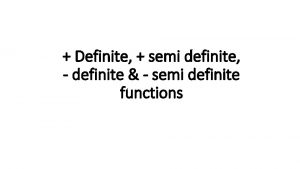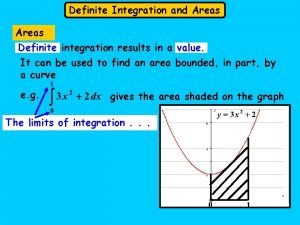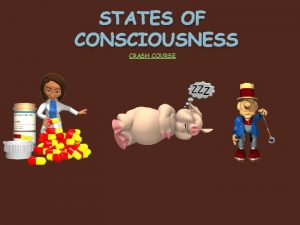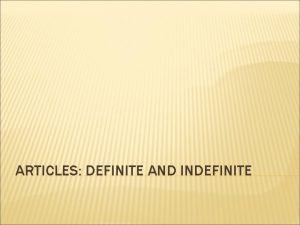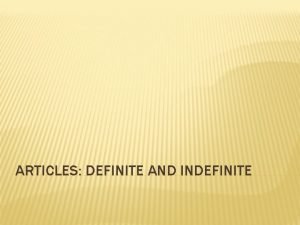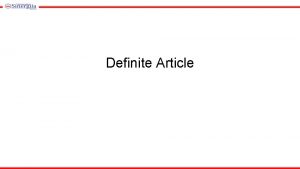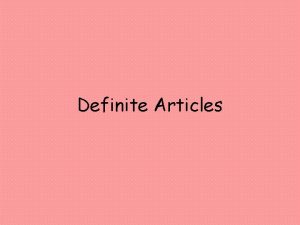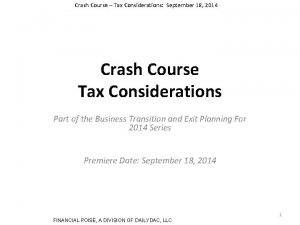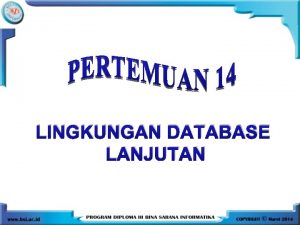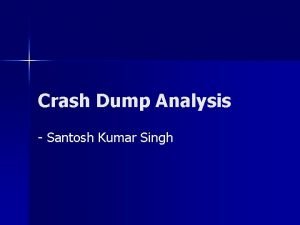Definite Integration MATHEMATICS Definite CRASH Integration COURSE Definite














![Question Let [t] denote the greatest integer less than or equal to t. Then Question Let [t] denote the greatest integer less than or equal to t. Then](https://slidetodoc.com/presentation_image_h2/3a9c9a9f30241784594a622b2e2329c9/image-15.jpg)




































- Slides: 51

Definite Integration MATHEMATICS Definite CRASH Integration COURSE

Definite Integration Fundamental Definition: A Let f(x) be a continuous function defined on [a, b], = F(x) + c. Then integral. = F(b) – F(a) is called definite

Definite Integration Note : 1. The indefinite integral , where as definite integral 2. Given we cannot find is a function of x ( Family of curves) is a number. we can find , but given

Question Evaluate : (A) (B) (C) (D)

Question The value of integral (A) (B) (C) (D) is :

Question

Question The integral (A) (B) (C) (D) dx is equal to :

Question A value of a such that (A) (B) -2 (C) 2 (D) is:

Question If (A) -1 (B) (C) (D) 1 , then m. n is equal to :

Question The integral (A) e(4 e– 1) (B) e(4 e+1) (C) 4 e 2– 1 (D) e(2 e– 1) equal :

Question If the value of the integral (A) (B) (C) (D) is , then k is equal to:

Definite Integration Properties of definite integral : P– 1 i. e. definite integral is independent of variable of integration. P– 2 P– 3 , where c may lie inside or outside the interval [a, b].

Question If f(x) = (A) (B) (C) (D) , then dx =

Question The integral (A) (B) (C) (D) is equal to :
![Question Let t denote the greatest integer less than or equal to t Then Question Let [t] denote the greatest integer less than or equal to t. Then](https://slidetodoc.com/presentation_image_h2/3a9c9a9f30241784594a622b2e2329c9/image-15.jpg)
Question Let [t] denote the greatest integer less than or equal to t. Then the value of is ____

Question

Question P – 4 (NENO Property) if f(–x) = f(x) i. e. f(x) is even =0 if f(–x) = –f (x) i. e. f(x) is odd

Question Evaluate : (A) (B) (C) (D)

Question

Question Evaluate : (A) 0 (B) 1 (C) 2 (D) 3

Question If and g(x) = logex, (x>0) then the value of the integral is : (A) loge 3 (B) loge 1 (C) loge 2 (D) logee

Question is equal to: (A) (B) (C) (D)

Definite Integration P – 5(King Property) Further

Question The value of (A) (B) (C) (D) is :

Question P – 6 ( Queen Property) If f(2 a – x) = f(x) =0 if f(2 a – x) = –f(x)

Question Evaluate : (A) 0 (B) 1 (C) 2 (D) 3

Question Evaluate : (A) (B) (C) (D)

Definite Integration Note :

Definite Integration P – 7 (Jack Property) If f(x) is a periodic function with period T, then (i) dx = n dx, n Î z (ii) n Î z, a Î R (iii) m, n Î z (iv) n Î z, a Î R (v) n Î z, a, b Î R

Question Evaluate : (A) 3(e - 1) (B) 3(e + 1) (C) 2(e – 1) (D) 2(e+1)

Question Evaluate : (A) 2 n +2 - sinv (B) 2 n – 2 - sinv (C) 2 n +2 + sinv (D) 2 n -2 + sinv and n Î z

Question

Definite Integration P – 8 If y(x) £ f (x) for a £ x £ b, then P – 9 Estimation of Definite Integration If m £ f(x) £ M for a £ x £ b, then m (b – a) £ Further if f(x) is monotonically decreasing in (a, b) then f(b)(b– a) < < f(a) (b – a) and if f(x) is monotonically increasing in (a, b) then f(a) (b – a) < < f(b) (b – a)

Definite Integration P - 10 : P – 11 : If f(x) ³ 0 on[a, b] then

Question

Definite Integration Leibnitz Theorem : If F(x) = , then = f(h(x)) h¢(x) – f(g(x)) g¢(x)

Question Evaluate : (A)is equal to 1 (B) is equal to 0 (C) does not exist (D) is equal to

Question If f(x) = (A) 1 (B) -1 (C) 2 (D) -2 , then find f¢(1)

Question Let f be a twice differentiable function on (1, 6). If f(2)=8, f’(2)=5, f’(x)³ 1 and f‘‘(x)³ 4, for all x Î (1, 6), then: (A) f(5)+f‘(5)³ 28 (B) f’(5)+f‘‘(5)£ 20 (C) f(5)£ 10 (D) f(5)+f’(5)£ 26

Definite Integration Definite Integral as a Limit of Sum. Let f(x) be a continuous real valued function defined on the closed interval [a, b] which is divided into n parts as shown in figure. The point of division on x-axis are a, a + h, a + 2 h. . a + (n – 1)h, a + nh, where = h.

Definite Integration Let Sn denotes the area of these n rectangles. Then, Sn = hf(a) + hf(a + h) + hf(a + 2 h) +. . . . +hf(a + (n – 1)h) Clearly, Sn is area very close to the area of the region bounded by curve y = f(x), x–axis and the ordinates x = a, x = b. Hence Sn

Definite Integration Note : 1. We can also write Sn = hf(a + h) + hf(a + 2 h) +. . + hf(a + nh) and 2. If a = 0, b = 1,

Question Evaluate : (A) (B) (C) (D)

Question

Question Evaluate : (A) 1/e (B) 2/e (C) 3/e (D) 4/e

Question Reduction Formulae in Definite Integrals If I 1 = a equals to : (A) (B) (C) (D) dx and I 2 = dx such that I 2 = a. I 1 then

Question

Question Walli’s Formula : Im, n =

Question Evaluate : (A) (B) (C) (D)

Question Evaluate : (A) (B) (C) (D)

 Traversy react
Traversy react The command line crash course
The command line crash course Crash course personality
Crash course personality Unity crash course
Unity crash course Uml crash course
Uml crash course Ap language and composition crash course
Ap language and composition crash course Nietzsche crash course
Nietzsche crash course Crash course weather
Crash course weather Ros crash course
Ros crash course Crash course altered states
Crash course altered states Aspe 3840
Aspe 3840 Bacteria kingdom monera
Bacteria kingdom monera Lsn in dbms
Lsn in dbms Project management crash course
Project management crash course The crucible crash course
The crucible crash course Crash course sliding filament theory
Crash course sliding filament theory Gas laws crash course
Gas laws crash course Crash course muscles part 2
Crash course muscles part 2 Crash course protestant reformation
Crash course protestant reformation Computer architecture crash course
Computer architecture crash course Cognitive psychology crash course
Cognitive psychology crash course False consensus effect
False consensus effect Robotics crash course
Robotics crash course Crash course harlem renaissance
Crash course harlem renaissance Drupal crash course
Drupal crash course Chemistry meth eth prop but
Chemistry meth eth prop but Crash course english grammar
Crash course english grammar Data mining crash course
Data mining crash course Crash course crusades
Crash course crusades Cellular respiration songs
Cellular respiration songs Crash course test anxiety
Crash course test anxiety Structure of blood vessels
Structure of blood vessels What are the five functions of the skeletal system
What are the five functions of the skeletal system Endo epi peri
Endo epi peri Physical chemistry crash course
Physical chemistry crash course Crash course molecular biology
Crash course molecular biology Crash course ww1
Crash course ww1 Crash course ancient greece
Crash course ancient greece Crash course ap bio
Crash course ap bio Weathevr
Weathevr Youtube
Youtube Cold war crash course
Cold war crash course Crash course calculus
Crash course calculus Reinforcement learning crash course
Reinforcement learning crash course Industrialization crash course
Industrialization crash course Alabama course of study math 2019
Alabama course of study math 2019 Complex integration engineering mathematics
Complex integration engineering mathematics Reverse chain rule
Reverse chain rule T junction in english bond
T junction in english bond Course title and course number
Course title and course number Course interne course externe
Course interne course externe Post merger integration presentation
Post merger integration presentation




